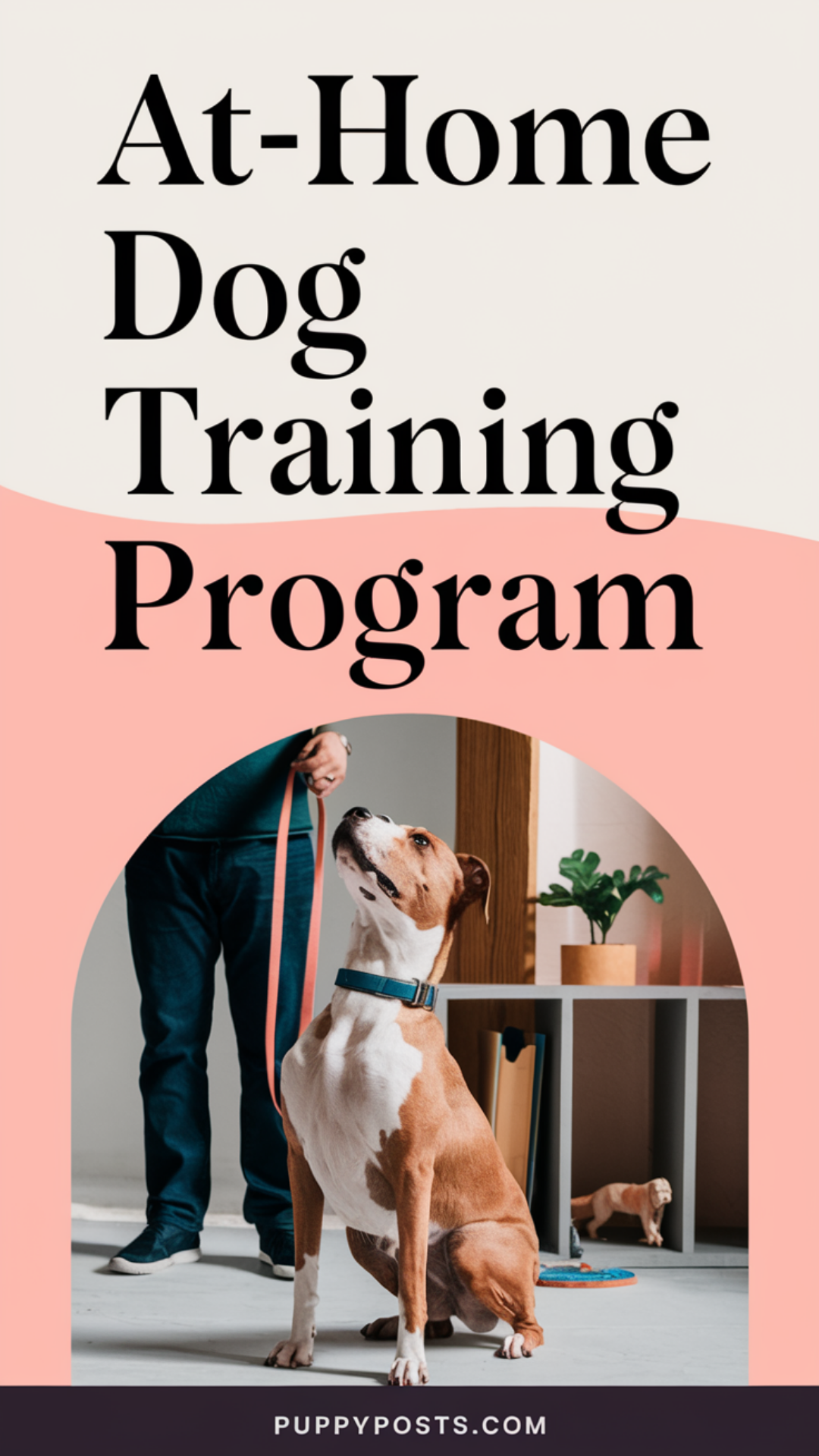At home Dog Training Program
As a veterinarian with over a decade of experience—and someone who runs a sanctuary for stray dogs and cats—I know one thing for sure: training your dog at home isn’t just possible, it’s the best thing you can do for them. Professional trainers are great, but you don’t need to spend hundreds of dollars to teach your dog how to behave. What you do need is consistency, patience, and the right approach.
If you’re serious about training your dog at home, follow this structured program. It’s simple, effective, and doesn’t cost you a fortune.

Step 1: Establish a Routine (Because Dogs Thrive on Structure)
Dogs need structure. If you’re training at home, the first step is setting up a daily schedule for feeding, potty breaks, exercise, and training sessions.
How to Set a Routine:
🐾 Pick a wake-up time – Feed, walk, and let your dog out at the same time every day.
🐾 Schedule training sessions – Keep them short (5-10 minutes) and do 2-3 sessions daily.
🐾 Stick to meal times – A predictable schedule helps with housebreaking and behavior.
✅ Why This Works: Dogs learn faster when they know what to expect. Consistency = success.
Step 2: Start with Basic Commands
Before you get into advanced training, your dog needs to master the basics. These commands build a strong foundation.
Essential Commands:
✔ Sit – Hold a treat above their nose and move it back. When they sit, reward them.
✔ Stay – Have your dog sit, say “stay,” and take a step back. Reward if they don’t move.
✔ Come – Use a leash indoors, say “come,” and gently guide them toward you. Reward.
✔ Leave it – Place a treat on the ground. When they go for it, say “leave it.” Reward when they ignore it.
📌 Pro Tip: Use positive reinforcement—treats, praise, or play—to reinforce good behavior.
Step 3: Leash Training (No More Pulling!)
A dog that drags you down the street isn’t just annoying—it’s dangerous. Proper leash training starts inside.
How to Teach Loose-Leash Walking:
🐕 Start indoors where there are no distractions.
🐕 Walk a few steps. If your dog pulls, stop walking. Don’t yank—just stand still.
🐕 The moment they relax, reward them and keep walking.
🐕 Gradually move to the backyard, then to quiet streets, then busier areas.
📌 Common Mistake: Don’t let your dog lead the walk. You set the pace, not them.
Step 4: Housebreaking (Because Accidents Aren’t Fun)
If your dog isn’t housebroken yet, this needs to be a top priority. Even older dogs can learn.
Housebreaking Tips:
✔ Take them out first thing in the morning, after meals, and before bed.
✔ Use a consistent potty spot outside.
✔ Reward immediately after they go (not after they come back inside).
✔ If they have an accident, don’t yell. Clean it up and move on.
📌 Crate Training Helps – Dogs don’t like to soil where they sleep. A crate can speed up the process.
Step 5: Socialization (Prevent Fear and Aggression)
Dogs that aren’t properly socialized can become fearful or aggressive. Exposing them to different experiences early and often helps prevent behavioral issues.
Ways to Socialize at Home:
🐶 Invite friends over so your dog meets new people.
🐶 Walk your dog in different environments (parks, quiet streets, busier areas).
🐶 Play sound recordings of fireworks, doorbells, and traffic so they get used to noises.
🐶 Introduce them to different surfaces (grass, tile, carpet, sand) to build confidence.
📌 Golden Rule: Keep socialization positive—don’t force interactions if your dog seems scared.
Step 6: Mental Stimulation (Tired Dogs Are Good Dogs)
Dogs don’t just need physical exercise; they need mental challenges too. A bored dog becomes a destructive dog.
Easy At-Home Brain Games:
🧠 Puzzle Feeders – Hide treats in a toy or an egg carton. Let them figure out how to get them out.
🧠 Hide and Seek – Have your dog stay, then hide somewhere in the house. Call their name and let them find you.
🧠 Scent Games – Hide a treat under one of three cups and let them sniff it out.
🧠 DIY Agility Course – Set up an obstacle course using chairs, broomsticks, and blankets.
📌 Why This Works: A mentally tired dog won’t destroy your couch.
Step 7: Fixing Common Behavior Problems
Every dog has their quirks. Here’s how to deal with the most common issues.
Jumping on People:
❌ Don’t push them off—that’s still attention.
✅ Ignore them completely until all four paws are on the ground, then reward calm behavior.
Barking at Everything:
❌ Don’t yell—it just makes them think you’re barking too.
✅ Teach the “Quiet” command by saying it calmly and rewarding silence.
Chewing on Everything:
❌ Don’t give them old shoes or socks—it confuses them.
✅ Give them appropriate chew toys and redirect them when they chew the wrong thing.
📌 Rule of Thumb: Reward good behavior, redirect bad behavior, and stay consistent.
Step 8: Advance to Off-Leash & Trick Training
Once your dog masters the basics, you can start training off-leash recall and fun tricks.
How to Train Off-Leash Recall:
🐕 Practice in a fenced area.
🐕 Start on a long leash, say “Come,” and reward when they return.
🐕 Increase distance gradually, then try without the leash in a safe area.
Fun Tricks to Teach:
🎾 Roll Over – Use a treat to lure them into rolling onto their side and then onto their back.
🐾 Shake Hands – Lift their paw gently while saying “shake,” then reward.
🎩 Spin – Move a treat in a circular motion in front of their nose until they turn.
📌 Why This Helps: Trick training strengthens your bond and keeps their brain engaged.






